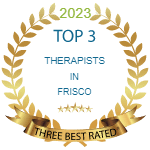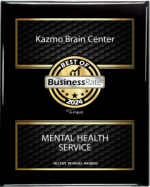Eating disorders are serious conditions related to persistent eating behaviors that adversely sway your wellbeing, your feelings, and your capacity to work in significant everyday activities.
Although the term eating is in the name, eating disorders are about more than food. They’re complex mental health conditions that often require the intervention of medical and psychological experts to alter their course.
These disorders are described in the American Psychiatric Association’s Diagnostic and Statistical Manual of Mental Disorders, fifth edition (DSM-5).
In the United States alone, an estimated 20 million women and 10 million men have or have had an eating disorder at some point in their life.
Common Symptoms of an Eating Disorder
Emotional and Behavioral
- Chronic dieting despite being hazardously underweight.
- Constant weight fluctuations.
- Frequent dieting.
- Extreme concern with body size and shape.
- Incessant checking in the mirror for apparent defects in appearance.
- Extreme mood swings.
- Obsession with calories and fat contents of food.
- Cutting out entire food groups (no sugar, no carbs, no dairy, vegetarianism).
- Withdrawal from usual friends and activities.
- Engaging in ritualistic eating patterns, such as cutting food into tiny pieces, eating alone and/or hiding food.
- Depression or lethargic stage.
- Switching between periods of overeating and fasting.
Physical
- Stomach cramps.
- Non-specific gastrointestinal complaints (constipation, acid reflux, etc).
- Menstrual irregularities.
- Troubles concentrating.
- Abnormal laboratory findings (anemia, low thyroid and hormone levels, low potassium, low white and red blood cell counts).
- Wooziness, particularly after standing.
- Fainting/syncope.
- Feeling cold constantly.
- Sleep problems.
- Dry skin hair and weak nails.
- Swelling around the area of salivary glands.
- Cuts and calluses across the top of finger joints (a result of inducing vomiting).
- Dental problems, such as enamel erosion, cavities and tooth sensitivity.
- Poor wound healing.
- Impaired immune functioning.
- Fine hair on the body (lanugo).
- Cavities, or discoloration of teeth, from vomiting.
- Muscle shortcoming.
- Yellow skin (in the context of eating large amounts of carrots).
- Cold, mottled hands and feet or swelling of feet.
Types of Eating Disorders
Anorexia Nervosa
Anorexia nervosa is likely the most well-known eating disorder.
It, by and large, develop during puberty or youthful adulthood and will in general influence a bigger number of ladies than men.
Numerous individuals with anorexia nervosa will wildly restrict the amount of food they devour and see themselves as overweight, even when they are unmistakably underweight.
Anorexia can have harmful wellbeing impacts, for example, brain damage, multi-organ failure, bone loss, heart difficulties and infertility. The danger of death is most elevated in people with this sickness.
Obsessive-compulsive symptoms are also often present with anorexia nervosa. For instance, many people with anorexia are often preoccupied with constant thoughts about food and some may obsessively collect recipes or hoard food. Such people may also have difficulty eating in public and exhibit a strong desire to control their environment, limiting their ability to be spontaneous.
Anorexia is formally classified into two subtypes — the restricting type and the binge eating and purging type.
People with the restricting type lose weight solely through dieting, fasting, or excessive exercise.
People with the binge eating and purging type may binge on large amounts of food or eat very little. In the two cases, after they eat, they purge using activities like vomiting, taking laxatives or diuretics, or exercising excessively.
Bulimia Nervosa
Bulimia nervosa is another well-known eating disorder.
Like anorexia, bulimia tends to develop during adolescence and early adulthood and It is more common in women than in men.
At the point when you have bulimia, you have episodes of bingeing and purging that involve feeling a lack of control over your eating.
During these episodes, you typically eat a large amount of food in a short time and then try to rid yourself of the extra calories in an unhealthy way. Because of guilt, shame and an intense fear of weight gain from overeating, you may force vomiting or you may exercise too much, or use other methods, such as laxatives, to get rid of the calories.
On the off chance that you have bulimia, you’re presumably engrossed with your weight and body shape and may pass judgment on yourself harshly and cruelly for your self-saw defects. You might be at an ordinary weight or even somewhat overweight.
In serious cases, bulimia can likewise make an imbalance in degrees of electrolytes, for example, sodium, potassium and calcium. This can cause a stroke or respiratory failure.
Pica
Pica is another dietary problem that includes eating things that are not viewed as food.
People with pica need non-food substances, for example, ice, earth, soil, chalk, cleanser, paper, hair, fabric, fleece, stones, clothing cleanser, or cornstarch.
Pica can happen in adults, as well as children and adolescents. That said, this disorder is most frequently observed in children, pregnant women and individuals with mental disabilities.
People with pica might be at an expanded danger of poisoning, infections, gut injuries and nutritional deficiencies. Depending on the substances ingested, pica may be fatal.
In any case, to be viewed as pica, the eating of non-food substances should not be a typical piece of somebody’s way of life or religion. Moreover, it should not be viewed as a socially satisfactory practice by an individual’s companions.
Binge Eating Disorder
Binge eating disorder is believed to be one of the most common eating disorders, especially in the United States.
It normally starts during pre-adulthood and early adulthood although it can develop later on.
At the point when you have a binge-eating disorder, you consistently eat a lot of food (gorge) and feel an absence of authority over your eating. You may eat rapidly or eat more food than intended, even when you’re not hungry, you may keep eating even long after you’re awkwardly full.
After a binge, you may feel remorseful, disturbed, or embarrassed by your conduct and the measure of food eaten. But you don’t try to compensate for this behavior with excessive exercise or purging, as someone with bulimia or anorexia might. Embarrassment can lead to eating alone to hide your bingeing.
A new round of bingeing usually occurs at least once a week. You may be normal weight, overweight or obese.
Rumination Disorder
Rumination disorder is repeatedly and persistently regurgitating food after eating, yet it’s not because of an ailment or another dietary issue such as anorexia, bulimia, or binge-eating disorder.
Food is brought back up into the mouth without nausea or gagging and regurgitation may not be intentional. Sometimes regurgitated food is rechewed and swallowed or spit out.
This rumination typically occurs within the first 30 minutes after a meal. Unlike medical conditions like reflux, it’s voluntary.
This disorder can develop during infancy, childhood, or adulthood. In infants, it tends to develop between 3–12 months of age and often disappears on its own. Children and adults with the condition usually require therapy to resolve it.
If not resolved in infants, rumination disorder can result in weight loss and severe malnutrition that can be fatal.
Adults with this disorder may restrict the amount of food they eat, especially in public. This may lead them to lose weight and become underweight.
Avoidant/Restrictive Food Intake Disorder
Avoidant/restrictive food intake disorder (ARFID) is a new name for an old disorder.
The term replaces what was known as a “feeding disorder of infancy and early childhood,” a diagnosis previously reserved for children under 7 years old.
Although ARFID generally develops during infancy or early childhood, it can persist into adulthood. What’s more, it’s similarly basic among men and women.
This disorder is characterized by failing to meet your minimum daily nutrition requirements because you don’t have an interest in eating; you avoid food with certain sensory characteristics, such as color, texture, smell, or taste; or you’re concerned about the consequences of eating, such as fear of choking.
Notice: Food isn’t stayed away from on account of dread of putting on weight like other eating disorders.
The disorder can result in significant weight loss or failure to gain weight in childhood, as well as nutritional deficiencies that can cause health problems.
Causes of Eating Disorders
The specific reason for eating disorders is unknown. As with other mental illnesses, there may be many causes, for example:
- Genetics and biology. Certain individuals may have qualities that expand their danger of developing eating disorders. Biological factors, such as changes in brain chemicals, may play a role in eating disorders.
- Psychological and emotional health. People with eating disorders may have psychological and emotional problems that contribute to the disorder. They may have low self-esteem, perfectionism, impulsive behavior, and troubled relationships.
- Aesthetically oriented sports, where an emphasis is placed on maintaining a lean body for enhanced performance such as rowing diving, ballet, gymnastics, wrestling, etc…
- Family and childhood traumas: childhood sexual abuse, severe trauma.
- Social or potentially peer pressure among companions and collaborators
- Stressful transitions or life changes.
Treatment for Eating Disorders
You can recover from an eating disorder, but it may take time and recovery will be different for everyone.
After being referred to an eating disorder specialist or team of specialists, they’ll be responsible for your care.
They should converse with you about some other help you may require, for example, for another mental or actual medical issue you have and remember this for your therapy plan.
Treatment will be different depending on the type of eating disorder you have, but will usually involve some kind of talking therapy.
You may likewise require customary wellbeing checks if your eating disorder is having an impact on your actual wellbeing.
It may also involve working through a guided self-help program if you have bulimia or binge eating disorder.
Most people will be offered individual therapy, but those with binge eating disorder may be offered group therapy.
For example, if your symptoms are most like anorexia, your treatment will be similar to the treatment for anorexia.
Eating disorder is a common, chronic and long-term disorder that needs help from a mental health counselor, so do not be shy to schedule an appointment with Kazmo Brain Center to help you with this disorder.
Kazmo Brain Center is a counseling center located in Frisco, Texas specializing in eating disorders, and will work with you toward a happier and more satisfying life. If you are facing problems and you think that you need aid in fixing them, Kazmo Brain Center can do excellent help.







